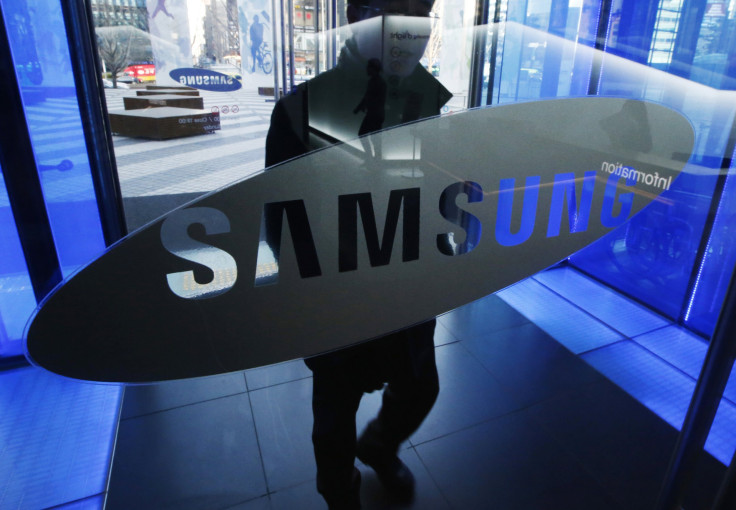Galaxy S6 Price Could Top $1,000 As Samsung Tests Smartphone Market’s Upper Limits

It’s no $20,000 Vertu phone, but the Samsung Galaxy S6 could carry a hefty price tag of its own. Reports say the coming device could exceed $1,000, continuing a trend of increasingly expensive handsets as manufacturers unveil products that wouldn’t seem out of place alongside luxe brands such as Movado and Cartier. Samsung’s gambit is that an ultrahigh-end device would give it an edge in a market awash in largely indistinguishable Android smartphones.
There’s a precedent. Samsung Electronics Co. Ltd. released a $950 (unlocked) phone just last year in the Galaxy Note Edge, which features a wraparound display.
Other smartphone manufacturers have similarly been devising new hooks to get consumers to pay more. Apple Inc. introduced its first phablet smartphone, the iPhone 6 Plus, pricing it $100 higher than the iPhone 6. And Google Inc. boosted the size of its Nexus smartphone from 5.2 inches to 5.9 inches and tacked on an extra $300.
Samsung could use a plus-size boost. The company has lost its status as the world’s largest device manufacturer, having seen significant drops in sales in the past year that culminated with the market failure of its Galaxy S5 flagship. The firm now appears to have realized that pushing out a host of carbon-copy smartphones is no longer a path to growth. Having lost its top spot to Apple, Samsung “desperately needs an aggressive comeback,” said Gartner research director Werner Goertz. “This is possible with a well-designed product, strong apps ecosystem, and aggressive price point.”
Samsung has pulled this off before. The South Korean manufacturer first introduced a new pricing tier in smartphones with its Galaxy Note phablet line, which was the largest smartphone on the market when it made its debut in 2012, IHS senior analyst Wayne Lam noted. Consumers balked when the device launched with a $300 contract price and a $700 off-contract tab, but it sold well. The original Galaxy Note paved the way for all the gargantuan and heavily priced smartphones we see today.
The key to Samsung’s salvation could be to drive up prices even further. Industry margins are falling as devices in all ranges become commodified. So some sellers are looking for ways to keep high-end devices at high-end prices. “Vendors are trying to differentiate in the high end, and in doing that they need to experiment with different, more expensive designs,” said Carolina Milanesi, chief of research and head of Kantar Worldpanel ComTech U.S. business.
The Galaxy S6 is expected to stand apart from any previous Galaxy S device in terms of design. Samsung may outfit it in metal and glass, dispensing with polycarbonate plastic casings. The smartphone could also launch with a slightly curved display, a user interface more like stock Android with little bloatware and a mobile-payment system to rival Apple Pay.
The Galaxy S6 could begin at €749 ($849) in Europe, while the midrange model may cost €849 ($963) and the top model may debut at €949 ($1,076), according to a report by Ars Technica. In contrast, the Samsung Galaxy S5 sold for between $600 and $650 in the U.S. when it launched in spring 2014. Additionally, Samsung may announce a Galaxy S6 Edge model, similar to the Galaxy Note Edge, but possibly with two curved edges to function as extra screens. That device could cost $963 for a 32 GB model, $1,076 for a 64 GB model and $1,189 for the 128 GB version.
Will consumers be receptive to a more expensive Galaxy S6/Galaxy S6 Edge just because it has new bells and whistles? Analysts have their doubts. “The dual-edge display and Samsung’s play in mobile payments are not compelling enough to challenge the iPhone or justify higher pricing,” Gartner’s Goertz said. The story could be different in the U.S., where contracts rule. “As long as subsidies are in place or ... installment plans become an option in more markets, consumers will not see the full price of these devices,” Kantar Worldpanel’s Milanesi said.
Counting itself as an industry innovator, Samsung may be hoping -- with the Galaxy S6 Edge especially -- it can repeat history by introducing a new niche market with a naturally large fan base. But the manufacturer may also be looking to ride Apple’s coattails in introducing a Galaxy S6 model that looks vastly different from any previous Galaxy S. Goertz called it the “iPhone 6 effect.” Apple introduced devices that don’t look anything like any previous iPhones and consumers went wild, with many not even considering the price. In fact, they bought so many units of the iPhone 6/6 Plus that Apple had its most successful iPhone launch to date.
The Samsung Galaxy S6 could be marketed to those top-tier consumers. “There are segments of the market that are willing to pay more,” IHS’ Lam said.
© Copyright IBTimes 2024. All rights reserved.






















